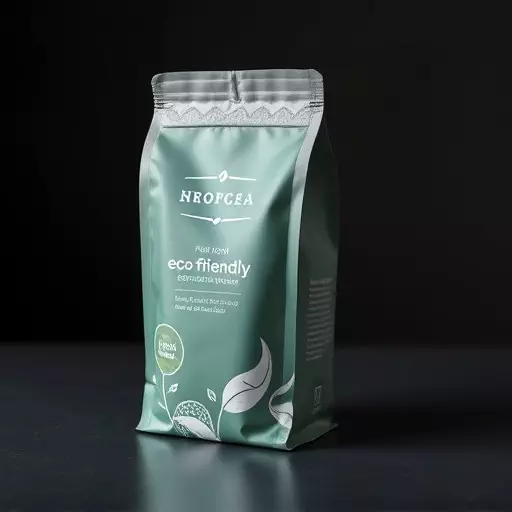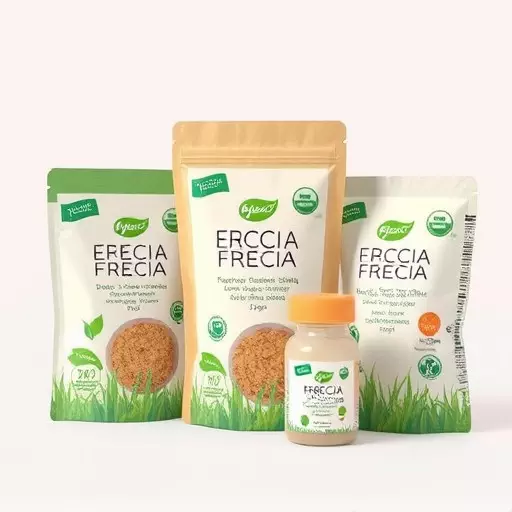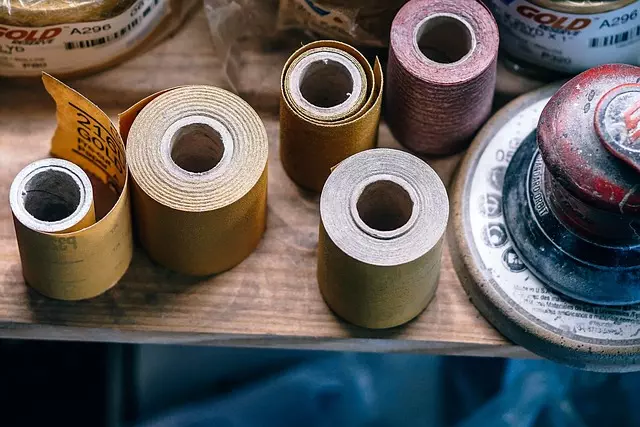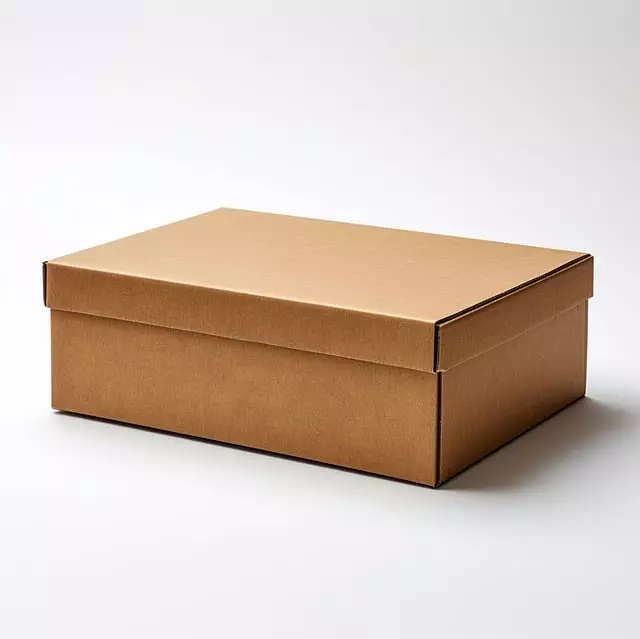In today's environmentally conscious market, "eco-friendly product packaging" is a key driver of innovation in "product packaging design". Consumers demand sustainable alternatives to traditional packaging, pushing businesses to adopt greener practices. Custom product packaging now emphasizes planet-friendliness without sacrificing quality or functionality, using materials like biodegradable plastics, recycled paper, and plant-based fibers. This shift not only benefits the environment but also allows businesses to stand out with their commitment to responsible practices. Designers strive to balance functionality and aesthetics, creating packaging that enhances brand identity and captivates consumers. Sustainability is a key differentiator for brands, empowering them to enhance their image and loyalty through eco-friendly product packaging solutions, while contributing to broader sustainability goals. The future of product packaging design focuses on innovative, biodegradable materials and custom solutions, leveraging digital technology like AR to engage customers in the unboxing experience, particularly crucial in the growing e-commerce landscape.
In today’s competitive market, a standout product packaging design is crucial for brand success. This article explores the multifaceted world of custom product packaging, delving into strategies that elevate your brand identity. We discuss the growing importance of eco-friendly materials, offer proven techniques to capture consumer attention, and examine the delicate balance between functionality and aesthetics.
Additionally, we analyze sustainability’s profound impact on consumer preferences and brand perception, present inspiring case studies, and peek into future trends shaping the industry. Discover how innovative custom product packaging can drive your brand forward while minimizing environmental impact through eco-friendly product packaging.
- Understanding Custom Product Packaging Design: Tailoring to Brand Identity
- The Role of Eco-Friendly Materials in Modern Packaging
- Effective Strategies for Grabbing Consumer Attention
- Balancing Functionality and Aesthetics in Product Packaging
- Sustainability's Impact on Consumer Preferences and Brand Perception
- Case Studies: Successful Custom and Eco-Friendly Packaging Implementations
- Future Trends Shaping Product Packaging Design
Understanding Custom Product Packaging Design: Tailoring to Brand Identity

The Role of Eco-Friendly Materials in Modern Packaging

In today’s market, where environmental consciousness is on the rise, eco-friendly materials are playing a pivotal role in shaping the future of product packaging design. Consumers are increasingly demanding sustainable alternatives to traditional packaging, pushing businesses to innovate and adopt greener practices. Custom product packaging, once seen as purely ornamental, now has an added responsibility: to be kind to the planet without compromising on quality or functionality.
Eco-friendly product packaging is not just a trend; it’s a necessary step towards reducing waste and mitigating the environmental impact of consumer goods. Materials like biodegradable plastics, recycled paper, and plant-based fibers offer viable solutions. These alternatives not only minimize landfill waste but also help in preserving natural resources, making them a key consideration for businesses aiming to create long-lasting positive change through their product packaging design choices.
Effective Strategies for Grabbing Consumer Attention

Balancing Functionality and Aesthetics in Product Packaging

In the realm of product packaging design, achieving a harmonious balance between functionality and aesthetics is paramount. On one hand, custom product packaging needs to serve its primary purpose of protecting the item inside, ensuring it arrives at its destination intact. This involves thoughtful consideration of materials, shapes, and structural integrity. Eco-friendly product packaging, in particular, has gained prominence as consumers become more conscious of their environmental impact. Using sustainable materials like biodegradable cardboard or recycled plastics not only reduces waste but also appeals to eco-conscious buyers.
However, beyond practicality lies the art of allure. Packaging design is a powerful tool for capturing consumer attention and conveying brand identity. Aesthetics play a crucial role in retail environments where products compete for shelf space. An eye-catching design can transform a mundane item into a desirable purchase. Thus, designers must skillfully blend functionality and aesthetics, creating custom product packaging that not only protects but also captivates, ensuring the end-user experience aligns with environmental sustainability and brand value.
Sustainability's Impact on Consumer Preferences and Brand Perception

In today’s market, sustainability has become a driving force behind consumer preferences and brand perception. Increasingly, customers are looking for products that align with their environmental values, making eco-friendly product packaging a key differentiator for brands. This shift towards sustainable practices not only caters to environmentally conscious consumers but also enhances brand image and loyalty. Businesses that adopt custom product packaging solutions with recycled or biodegradable materials can stand out in a crowded market and appeal to the growing demand for greener alternatives.
The impact of sustainability on product packaging design is profound, encouraging innovative and creative approaches. Custom product packaging that reduces waste, minimizes environmental impact, and communicates eco-friendly values can foster positive brand associations. As consumers become more discerning about their purchases, brands that prioritize sustainability in their packaging strategies are likely to gain a competitive edge and contribute to a more sustainable future.
Case Studies: Successful Custom and Eco-Friendly Packaging Implementations

Future Trends Shaping Product Packaging Design

The future of product packaging design is being reshaped by a growing awareness of environmental concerns, leading to a significant shift towards eco-friendly options. Consumers are increasingly demanding sustainable packaging solutions, pushing manufacturers to explore innovative and biodegradable materials. This trend is set to define the industry’s direction, with custom product packaging taking on new forms, such as compostable or recyclable alternatives, while still ensuring product protection and brand identity.
Digital technology is another key influencer, enabling designers to create visually appealing and interactive packages that enhance the unboxing experience. Augmented reality (AR) and personalized design elements can engage customers, fostering a deeper connection with the brand. As e-commerce continues to grow, so does the need for unique, stand-out packaging that not only protects products but also serves as a powerful marketing tool, especially in a crowded online marketplace.


